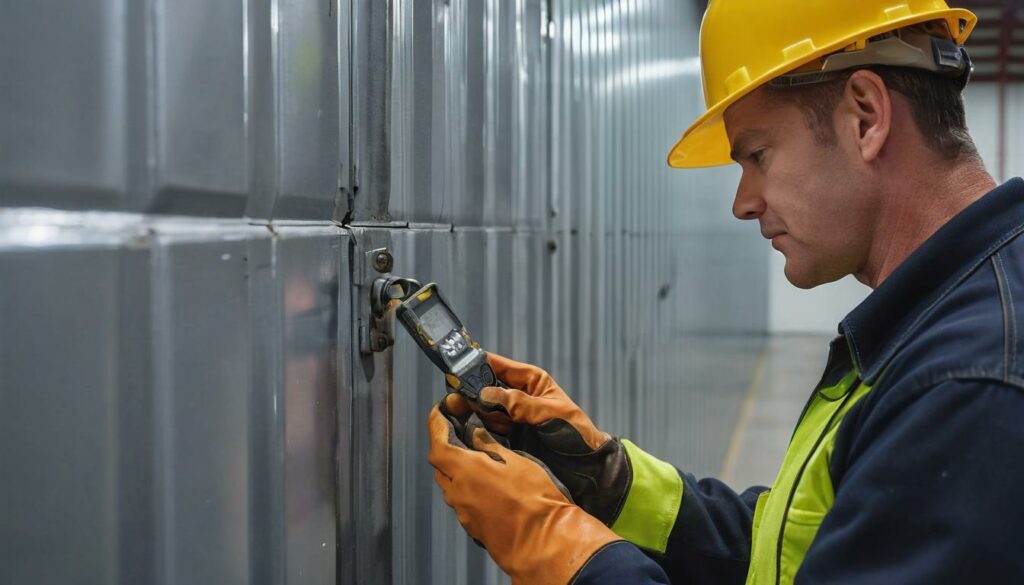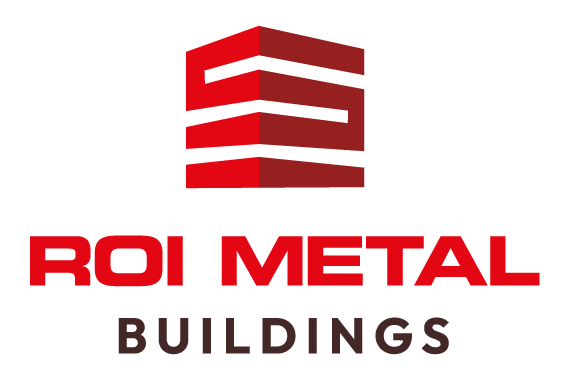Maintaining your metal storage building isn’t just about keeping it functional—it’s about protecting your investment and preventing costly repairs down the line. Every dent or spot of rust is a potential threat to the structure and the valuables inside. To keep these worries at bay and ensure longevity, having a robust maintenance plan is crucial. That’s why we’ve put together the Ultimate Maintenance Guide for Metal Storage Buildings!
In this detailed guide, we’ve compiled practical tips from thorough inspections of various buildings and countless hours spent in maintaining these structures ourselves. From routine checks to cleaning methods that safeguard against corrosion, and even lubrication tips for moving parts—we’ve covered every aspect needed to keep your metal storage building in top shape. By following these steps, you can rest assured that your building will stand strong for years to come.
This article is the last of a series dedicated to mini-storage and self-storage. Last week, we wrote a detailed article about how to customize metal self-storage units. If you’ve followed our articles over the last couple of weeks you’ve learned quite a bit about mini-storage buildings. If you’re planning on starting a mini-storage business and haven’t read these articles yet, make sure to check out our other articles for more great tips!
Regular maintenance is crucial for the longevity of metal storage buildings. Some key tips include regular cleaning and inspection of the structure, addressing any rust or corrosion, ensuring proper insulation, and maintaining gutters and drains to prevent water damage. Additionally, lubricating hinges and doors, as well as promptly repairing any damaged paint, can significantly contribute to preserving the structural integrity and visual appeal of your metal storage building.

Essential Maintenance Steps for Metal Storage Buildings
Metal storage buildings are excellent for safeguarding our belongings, but they require regular care to stay in top condition. Let’s break down some crucial maintenance steps to keep these structures functioning at their best.
Step I – Routine Inspections
Inspecting your metal storage building every three months is a smart move. It’s like giving it a regular check-up to catch any potential problems early. Look for loose bolts, damaged panels, or any signs of wear and tear. By doing this, you can identify issues before they become bigger problems—saving you time and money in the long run.
Take a walk around the building, paying close attention to the joints and corners. Make sure to also inspect the roof for any loose fasteners or areas where water might be seeping through. Regular inspections are an opportunity to address issues before they escalate, maintaining the structural integrity of your metal storage building.
Step II – Cleaning the Exterior
Now, onto keeping the exterior of your metal storage building clean. Use a gentle cleaning solution, like mild detergent and water, to wash away dirt, grime, and any corrosive elements that may have settled on the surface. Regular cleaning not only keeps your building looking good but also helps prevent corrosion from taking hold.
It’s important to avoid using high-pressure washers as these could potentially damage the metal surface. Opt for a soft brush or a sponge along with your cleaning solution for a thorough yet gentle clean.
Step III – Checking for Leaks
Leakages can be a real headache for metal buildings. Water seeping in can lead to rust and structural damage over time if left unaddressed. Take the time to inspect the building for any signs of leaks, particularly around seams and joints.
If you spot any leaks or signs of water intrusion, it’s imperative to address them promptly. Water damage can compromise the structural integrity of the building, so tackling leaks early can save you from more extensive repairs down the line.
Step IV – Lubricating Moving Parts
Metal components need some love too! Apply lubricant to hinges, locks, and sliding doors to ensure they operate smoothly without any stiff or jerky movements. Regular lubrication will prevent rust buildup as well, keeping these moving parts in good working condition for years to come.
By following these essential maintenance steps, you’ll be able to uphold the durability and longevity of your metal storage building, ensuring it remains a reliable and secure space for storing your valuable possessions.
As we’ve covered essential steps for maintaining metal storage buildings, let’s now dive into the topic of “Regular Cleaning and Rust Prevention” to further enhance the upkeep of these essential structures.
Regular Cleaning and Rust Prevention
Cleaning and preventing rust are two of the most crucial tasks in maintaining your metal storage building. Regular cleaning not only maintains the pristine appearance of your building, but it also effectively prevents rust from taking hold. When cleaning metal, using non-abrasive materials is essential to avoid causing damage to the surface. A simple and effective way to clean rust spots is by using a mix of baking soda and water with a soft, non-abrasive cloth. This gentle scrubbing helps to remove the rust without harming the metal surface.
After cleaning, always remember to thoroughly rinse the area to remove any residual cleaning solution. Leaving residue behind can expedite the rusting process as moisture and residue create an environment conducive to corrosion. Once rinsed, ensure that the area is completely dry to prevent any moisture buildup. It’s crucial to keep in mind that moisture is one of the key factors that can accelerate rust formation on metal surfaces.
Imagine having cleaned a portion of your metal storage building but neglecting to dry it properly. The lingering moisture could cause more harm than good, potentially leading to a rapid onset of rust despite your efforts to clean it.
Rust Prevention: Applying a protective rubber coating or rust-resistant paint after cleaning is an important step in preventing future rust formation. These protective layers act as a barrier against moisture and other corrosive elements, safeguarding vulnerable areas such as fasteners and seams where moisture tends to accumulate.
In particular, fasteners and seams are especially prone to rust due to their design, which can easily trap moisture. By applying a thorough coat of rust-resistant paint or rubber coating in these areas, you add an extra layer of protection against the elements, mitigating the risk of rust formation.
Regular cleaning coupled with effective rust prevention measures ensures that your metal storage building remains durable and visually appealing while significantly extending its service life.
As important as regular maintenance is for preventive care, equally vital is the practice of inspecting and maintaining various components of your metal storage building to address potential issues before they escalate.
Inspecting and Maintaining Parts
When it comes to routine inspections, don’t forget to check the fasteners – they play a significant role in holding your building together.
Inspect the screws and bolts to make sure they’re tight and secure. Over time, these can loosen due to natural movements from wind loads or seismic activity, so it’s essential to regularly verify their integrity. If you notice any signs of rust or wear, it’s best to replace them promptly to maintain the structural soundness of your building.
Imagine fasteners like the glue that holds everything in place. If any of these become loose or corroded, it could compromise the overall stability of your metal building. By including fastener inspections as part of your regular maintenance routine, you are essentially taking proactive measures to avoid potential issues down the line.
Now, let’s talk about doors and windows. These are the gateways to your metal building, so it’s crucial that they are properly sealed and fully functional. Over time, weatherstripping may wear out, which can lead to drafts and moisture intrusion.
When conducting your maintenance checks, pay close attention to the condition of the weatherstripping around doors and windows. Worn-out weatherstripping can compromise insulation and weatherproofing, making your building susceptible to drafts and moisture-related problems. It’s recommended to adjust or replace any deteriorating weatherstripping promptly.
Proper insulation not only keeps your building at a comfortable temperature but also prevents moisture from seeping in, reducing the risk of corrosion and other structural issues associated with dampness. Regularly maintaining weatherstripping is an effective way to safeguard your building against potential leaks and maintain its energy efficiency.
In summary, conducting thorough inspections of fasteners and weatherstripping is essential for ensuring the structural integrity and functionality of your metal storage building. By addressing these key components during regular maintenance checks, you can mitigate potential issues and contribute to the long-term durability of your structure.
Transitioning from preserving the integrity of metal storage buildings to focusing on a critical aspect: caring for the roof and ensuring weather-tight security.
Roof Care and Weatherproofing
When it comes to your metal storage building, the roof acts as its shield, safeguarding everything inside from harsh weather. It’s crucial to keep an eye on it and show it some love too. Despite their durability, metal roofs can still encounter issues if not properly maintained. Thankfully, a little regular upkeep can prevent many of these problems.
Inspecting your metal storage building’s roof after heavy storms is particularly important. Keep an eye out for dents, leaks, or loose panels, as these can compromise the roof’s integrity and lead to water leakage, causing significant damage to the interior and resulting in costly repairs if left unchecked.
In addition to visual inspections, clearing debris such as leaves and branches from the roof is essential. Debris can block drainage paths, leading to water pooling on the roof, which can eventually seep into the building.
Imagine a clogged drainage system during a heavy rainstorm – water cannot escape easily and starts collecting in one area on the roof, adding extra weight and increasing the risk of leaks.
Applying a weatherproof sealant to the roof can significantly enhance its ability to repel water and withstand extreme weather conditions. This added layer of protection not only extends the lifespan of the roof but also reduces the likelihood of damage caused by water infiltration over time.
Just like regular maintenance for other parts of your metal storage building, caring for the roof will help you avoid costly repairs and protect your investment. By taking these simple steps, you’re ensuring that the shield of your structure remains strong and reliable, providing lasting protection for your belongings inside.
As we continue to fortify our understanding of maintaining metal storage buildings, let’s now turn our attention to effective insulation techniques that can further enhance the durability and functionality of your structure.
Effective Insulation Techniques
Insulation isn’t solely about maintaining warmth in winter and coolness in summer; it also bolsters the structural integrity of your building and shields the stored contents from harm. Proper insulation can help regulate interior temperature, stave off condensation, and ultimately prolong the lifespan of your metal storage building.
The first consideration is incorporating vapor barriers. These barriers prevent moisture from permeating the walls and ceilings, aiding in preserving a dry and secure environment within. One prevalent choice for insulating walls and ceilings is fiberglass batt insulation covered with a vapor barrier. This type of insulation is renowned for its efficacy in temperature regulation and preventing moisture buildup, crucial for safeguarding both the building’s structure and the stored items.
Additionally, spray foam insulation can be an excellent option for metal storage buildings, serving as both insulation and a moisture barrier. It provides a comprehensive solution to regulate interior temperatures and minimize the risk of water damage. Selecting the appropriate insulation type based on specific building requirements and local climate conditions is key.
In colder climates notorious for extreme temperatures, high-quality insulation becomes even more critical. Without proper insulation, cold weather could lead to condensation forming on interior walls or roofs, potentially causing structural damage over time. However, with effective insulation, you can enhance energy efficiency while maintaining a stable climate inside the building, even in challenging weather conditions.
In summary, investing in proper insulation for your metal storage building is essential not only for protecting your stored items but also for maintaining the structural integrity of the building itself. By utilizing suitable insulation materials and techniques, you can create a comfortable and sustainable environment within your metal storage building while safeguarding it against potential weather-related damages.
With an understanding of effective insulation under our belt, let’s turn our attention to fortifying your metal storage building against external elements with reliable protective strategies.
Strategies for Lasting Protection
Protective coatings play a crucial role in safeguarding your metal storage building against the elements. A high-quality UV-resistant paint or coating acts as a shield, preventing sun damage and corrosion. It’s important to apply these coatings periodically as a proactive measure for continuous protection. Just like our skin needs sunscreen to prevent damage from the sun, your metal building needs its protective coating.
The exterior of your building is constantly exposed to natural elements, making it essential to provide an additional layer of defense against potential damage. Regular inspection of the existing protective layer and timely repainting will help maintain the structural integrity and visual appeal of your metal storage building.
Ground Level Protection
Water accumulation at the base of the building can pose significant threats like rust, corrosion, and weakened structural stability. Installing gutters and downspouts is an effective preventive measure to direct water away from the foundation. Proper drainage will reduce the risk of moisture-related damage, thereby extending the lifespan of your metal storage building.
Foundation Checks
Upon regular inspection, if cracks or signs of settling are identified in the foundation, addressing these issues promptly becomes imperative. Cracks or settling can potentially lead to structural problems that undermine the stability of the entire building. Timely intervention in such cases can prevent costly damages and maintain the long-term functionality of your metal storage structure.
By applying protective coatings, ensuring ground-level protection, and conducting thorough foundation checks, you’re actively fortifying your metal storage building against potential threats and securing its durability for years to come.
Ensuring the longevity of your metal storage building goes beyond just protective measures; it involves a comprehensive approach that addresses various factors influencing its resilience and functionality.
Tips for Long-Term Durability
When it comes to maintaining the integrity and longevity of your metal storage building, attention to several key factors plays a vital role. From environmental considerations to seasonal maintenance and professional inspections, here are some essential tips for preserving the durability of your metal storage building.
Step I – Environmental Considerations
The location of your metal storage building is crucial to its long-term durability. Avoid placing it near trees or other structures that could potentially cause damage. Overhanging branches can lead to significant damage if they fall on the building, while poor ventilation caused by surrounding structures can contribute to excess moisture build-up.
Seasonal Maintenance
Each season demands specific maintenance measures to ensure the continued durability of your metal storage building. Before the onset of winter, it’s important to clear snow and ice from the roof to prevent excessive weight and potential leaks. In spring, conducting a thorough check for any damage caused by winter is essential. Taking proactive steps to repair any issues will help prepare the building for the warmer months ahead.
Professional Inspections
Carrying out annual professional inspections is a wise investment in maintaining the long-term durability of your metal storage building. These inspections are invaluable for identifying any hidden issues that may not be apparent during regular maintenance routines. Additionally, professional services can provide comprehensive care and extend the lifespan of your storage building through their expert recommendations and interventions.
Want To Talk About The Ultimate Maintenance Guide for Metal Storage Buildings?
By heeding these tips and adhering to a proactive maintenance schedule, you can ensure that your metal storage building remains durable and reliable in the face of environmental challenges and seasonal changes. If you’re ready to start your project, contact us or call us at 865-316-9009. Also, if you like our content and want to stay up to date, follow us on Facebook at https://www.facebook.com/roimetalbuildings!



